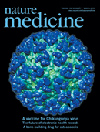 The EU’s €50.5 billion ($69.4 billion) research framework is the biggest such fund in the world. But it is not known for being nimble, and it is underused by European businesses. Now, as the seven-year program approaches its half-time review, a change in the political lineup could lead to shifts in funding priorities that favor ambitious pan-European ideas.
The EU’s €50.5 billion ($69.4 billion) research framework is the biggest such fund in the world. But it is not known for being nimble, and it is underused by European businesses. Now, as the seven-year program approaches its half-time review, a change in the political lineup could lead to shifts in funding priorities that favor ambitious pan-European ideas.
Máire Geoghegan-Quinn, a former member of the Irish parliament, took office last month as European Commissioner for Research, Innovation and Science and will oversee a portfolio that combines for the first time all three areas. At her nomination hearing in January, she promised to make funding more accessible to business and to seek new backing for research.
“Refined knowledge will replace crude oil as the economy’s prime motive force,” Geoghegan-Quinn told a European parliamentary committee.
Geoghegan-Quinn’s appointment will probably lead to a greater focus on translating basic biomedical research into treatments for diseases that affect many EU countries, says European Commission health research director Ruxandra Draghia-Akli. “There are a lot of data that are coming out of genomic, proteomic and metabolomic projects, and the data have to be exploited…with an eye towards personalized medicine.”
The new commissioner will also be in a key position to shape the next framework program, slated for 2014–2020. Under the current Seventh Framework Program (FP7),  6.1 billion was earmarked for health research, though several European research funding streams touch on health issues. Official planning for FP8 begins later this year, and a proposal is due in early 2012.
6.1 billion was earmarked for health research, though several European research funding streams touch on health issues. Official planning for FP8 begins later this year, and a proposal is due in early 2012.
Geoghegan-Quinn’s appointment comes hot on the heels of EU member states ratifying the Treaty of Lisbon, which came into effect in December and represents the first European treaty to explicitly address research. At the same time, Brussels is preparing the Europe 2020 strategy, a document that will outline how to use Europe’s research resources to achieve large societal goals. And, on 9 February, European science ministers meeting in San Sebastián, Spain issued a declaration of the importance of fully integrating research into the continent’s economic strategy.
In this vein, Geoghegan-Quinn hinted in her hearing that more funds aimed at leveling the playing field among EU member states could be turned toward basic research funding, with coordination from Brussels. Currently,  86 billion of the so-called cohesion fund’s
86 billion of the so-called cohesion fund’s  347 billion pot of cash goes toward research, innovation and enterprise projects, but this money is managed at a regional level. For example, Poland recently dipped into the fund to finance higher education and competitive research grants.
347 billion pot of cash goes toward research, innovation and enterprise projects, but this money is managed at a regional level. For example, Poland recently dipped into the fund to finance higher education and competitive research grants.
Such thinking may also be behind a multimillion-euro pilot, adopted in December to tackle Alzheimer’s and other neurodegenerative diseases, that was jointly funded by several national research organizations, says Gunnar Sandberg, international collaboration coordinator for health, ideas and regions at Vinnova, the Swedish government agency for innovation in Stockholm. Joint programming between countries and across European funding streams should help further concentrate Europe’s research resources on problems of common interest, he says.